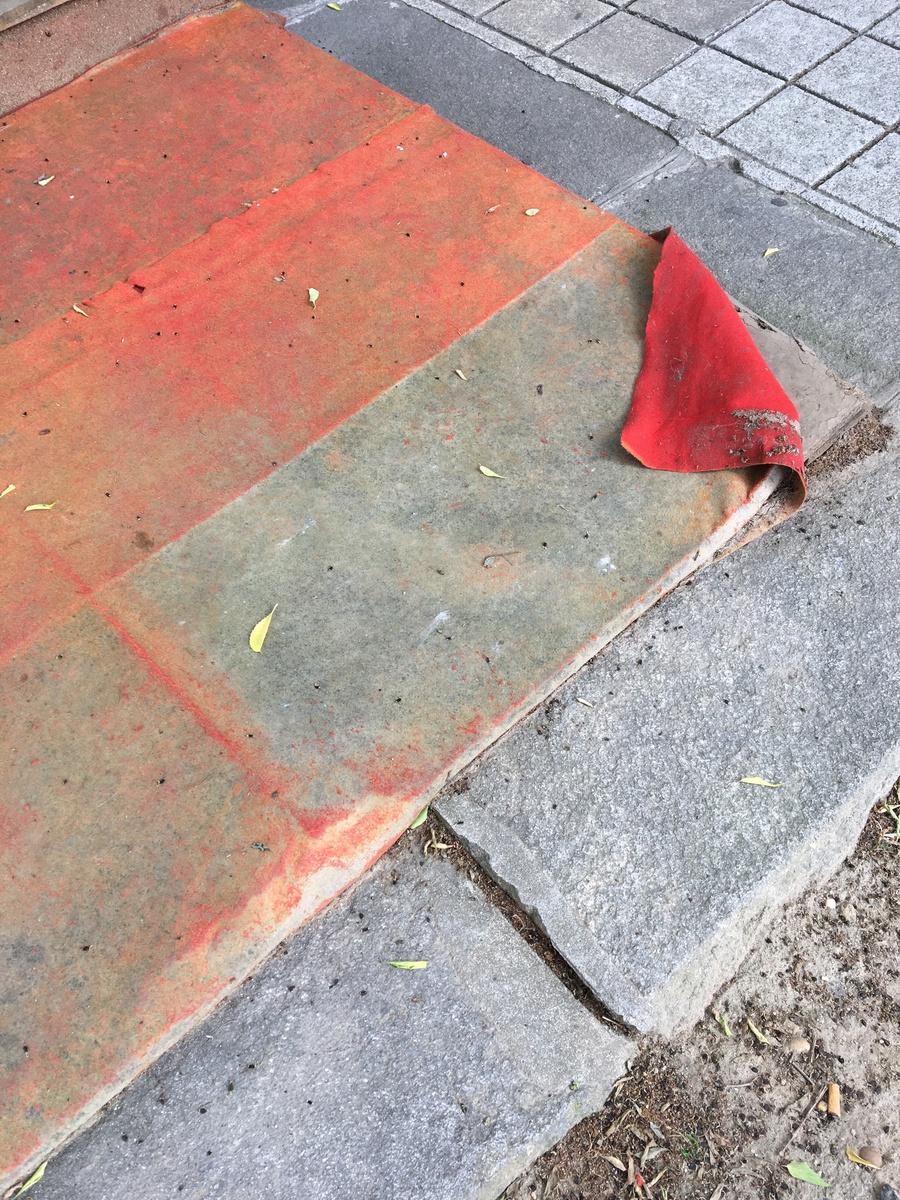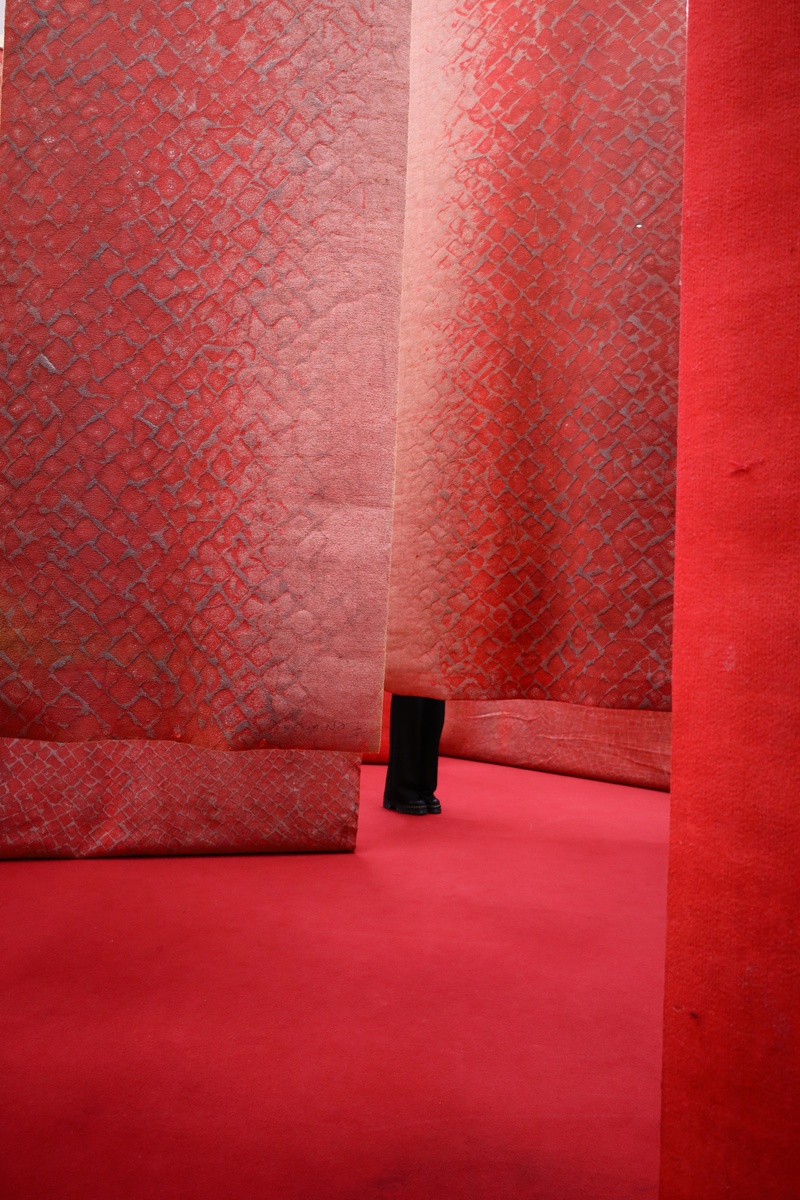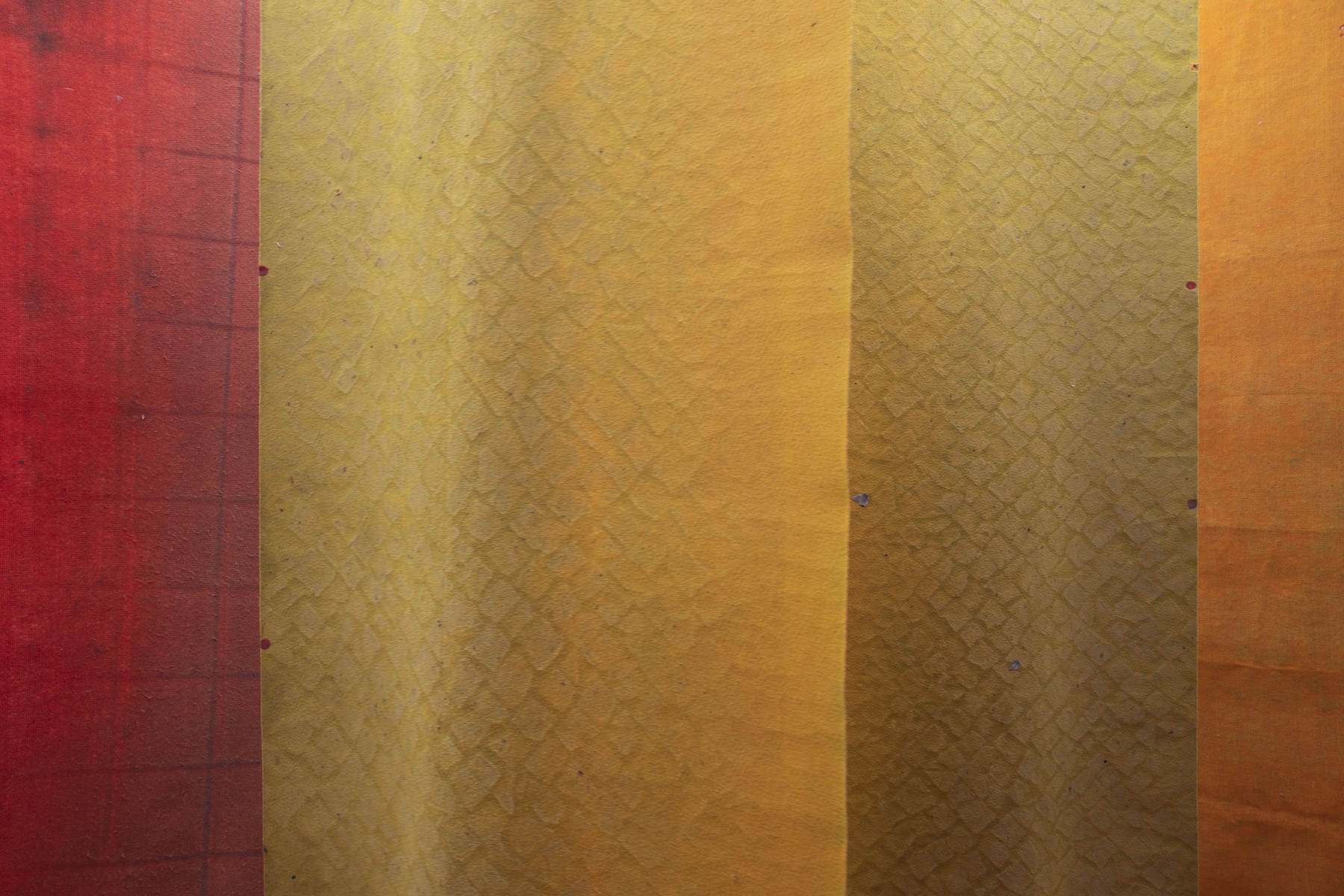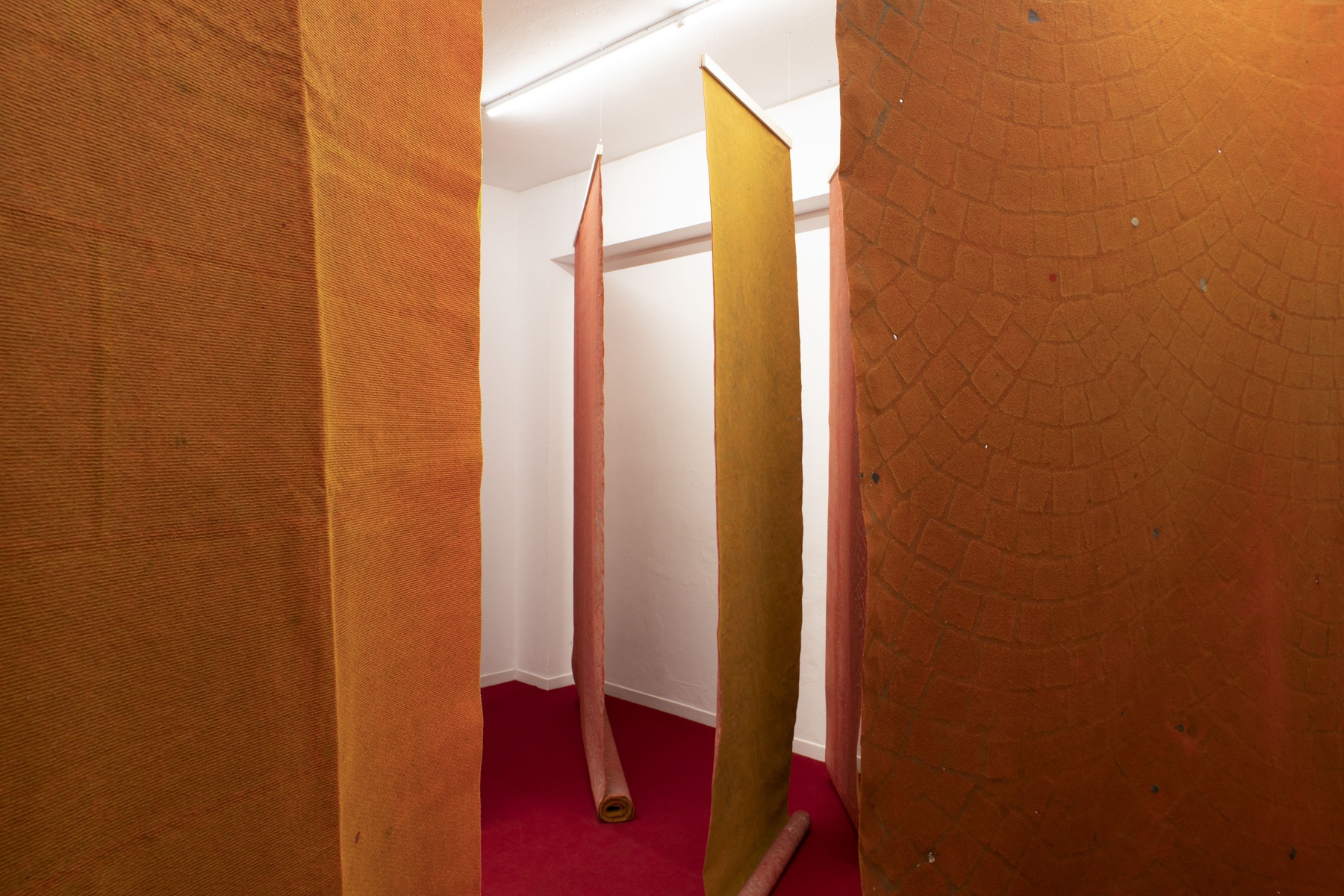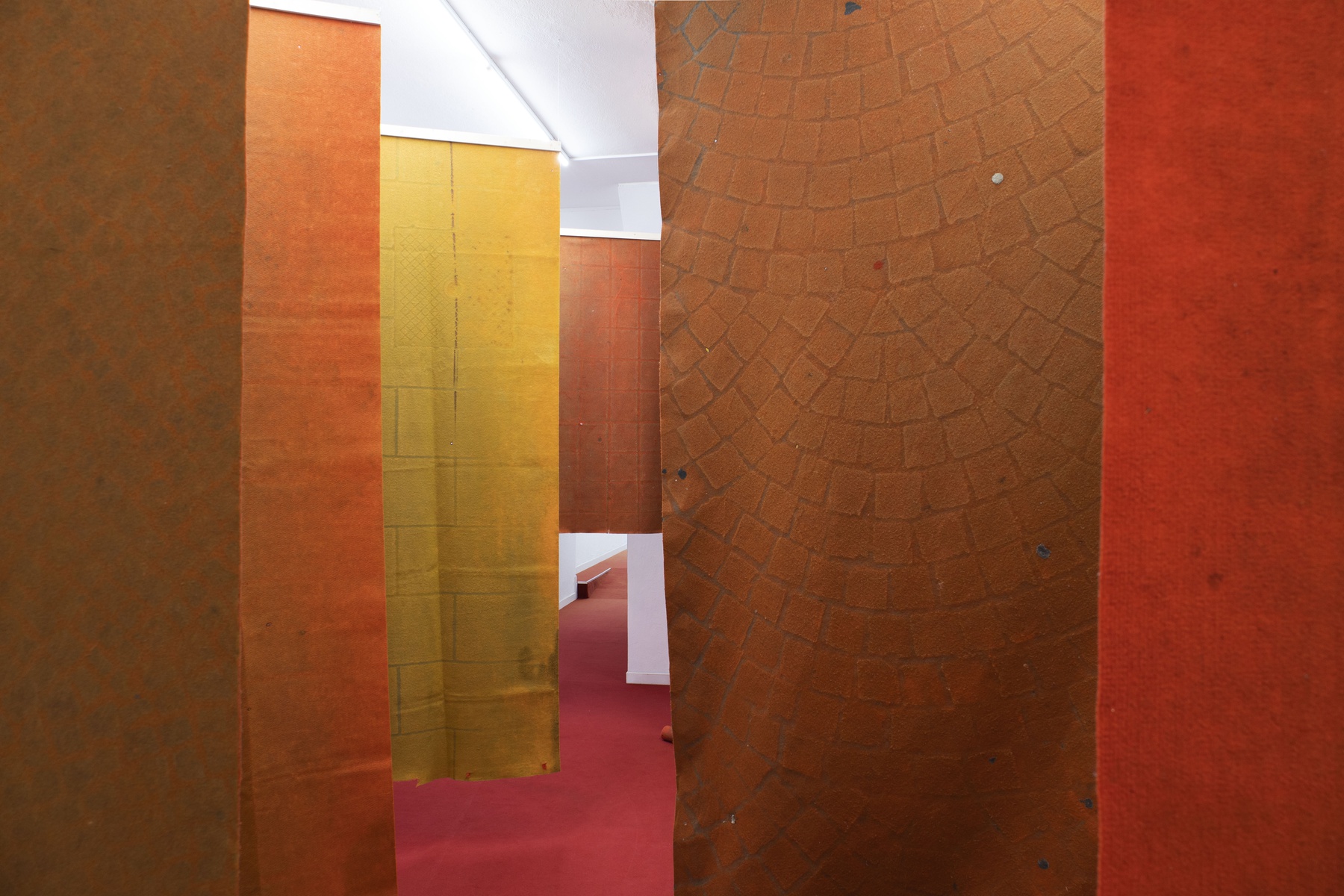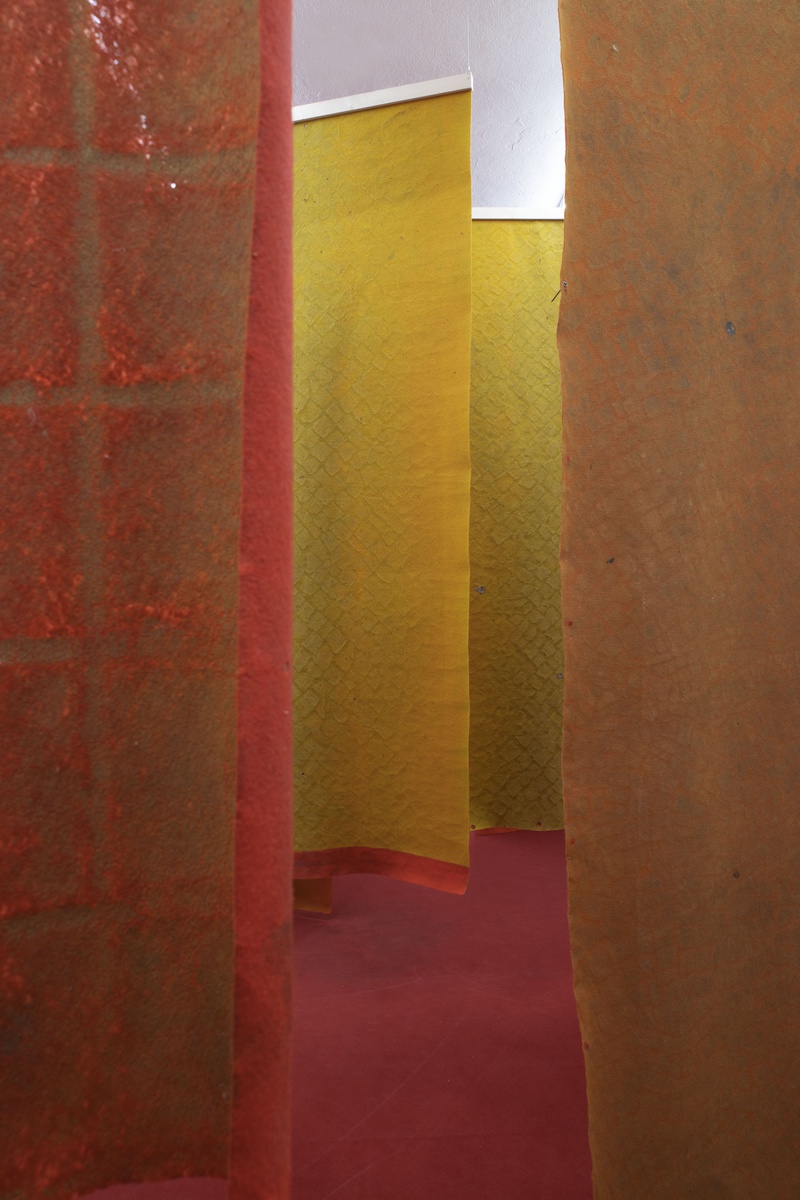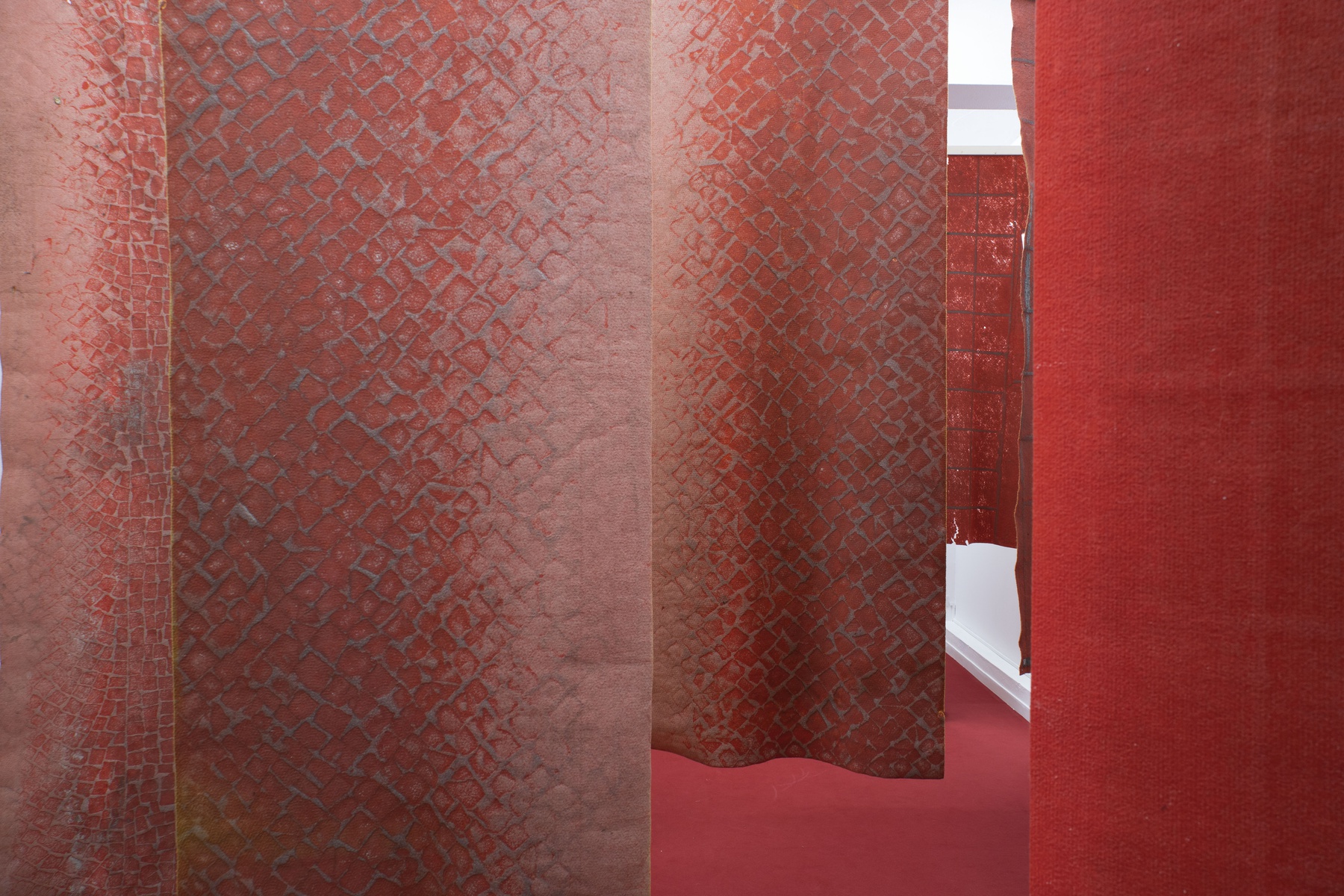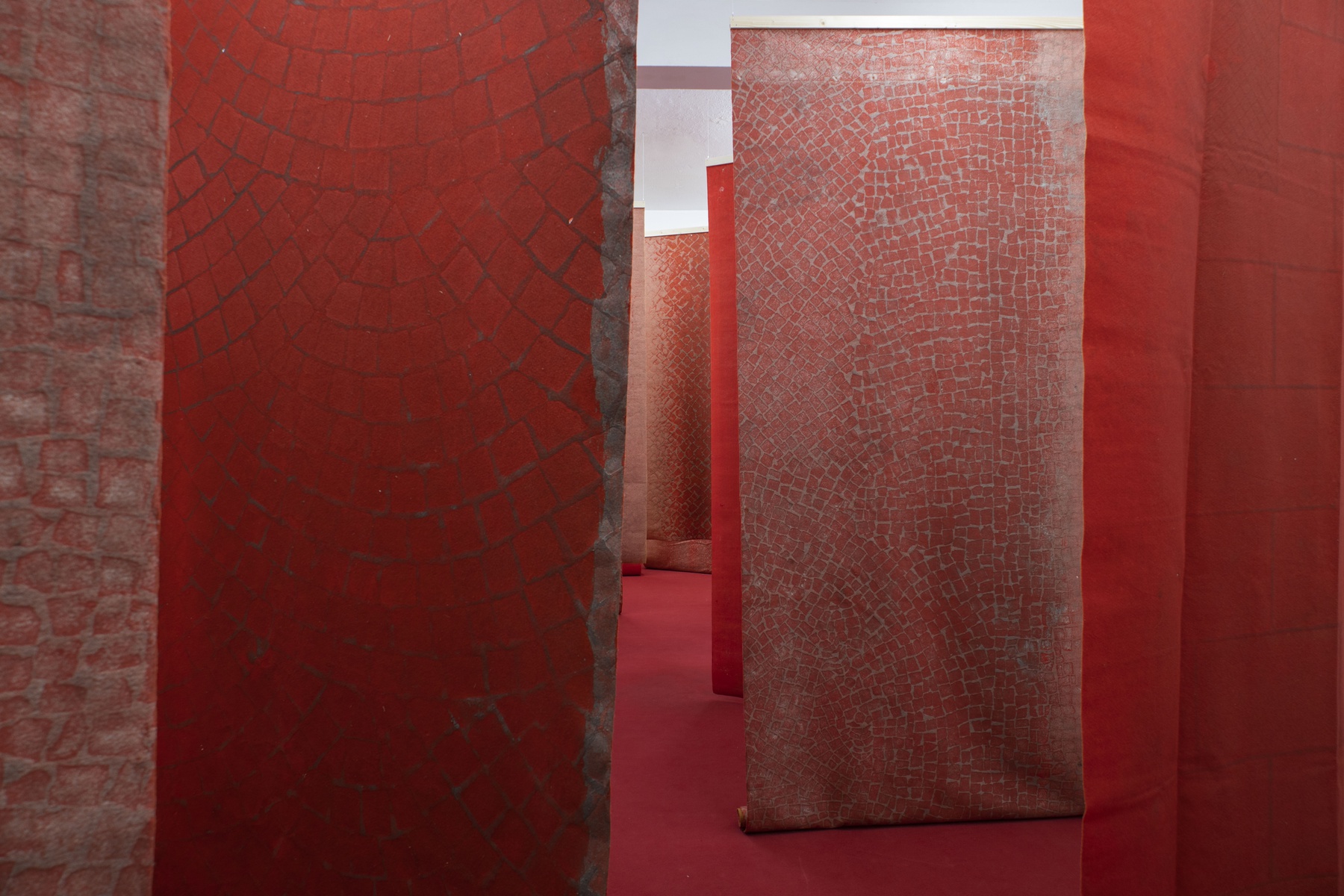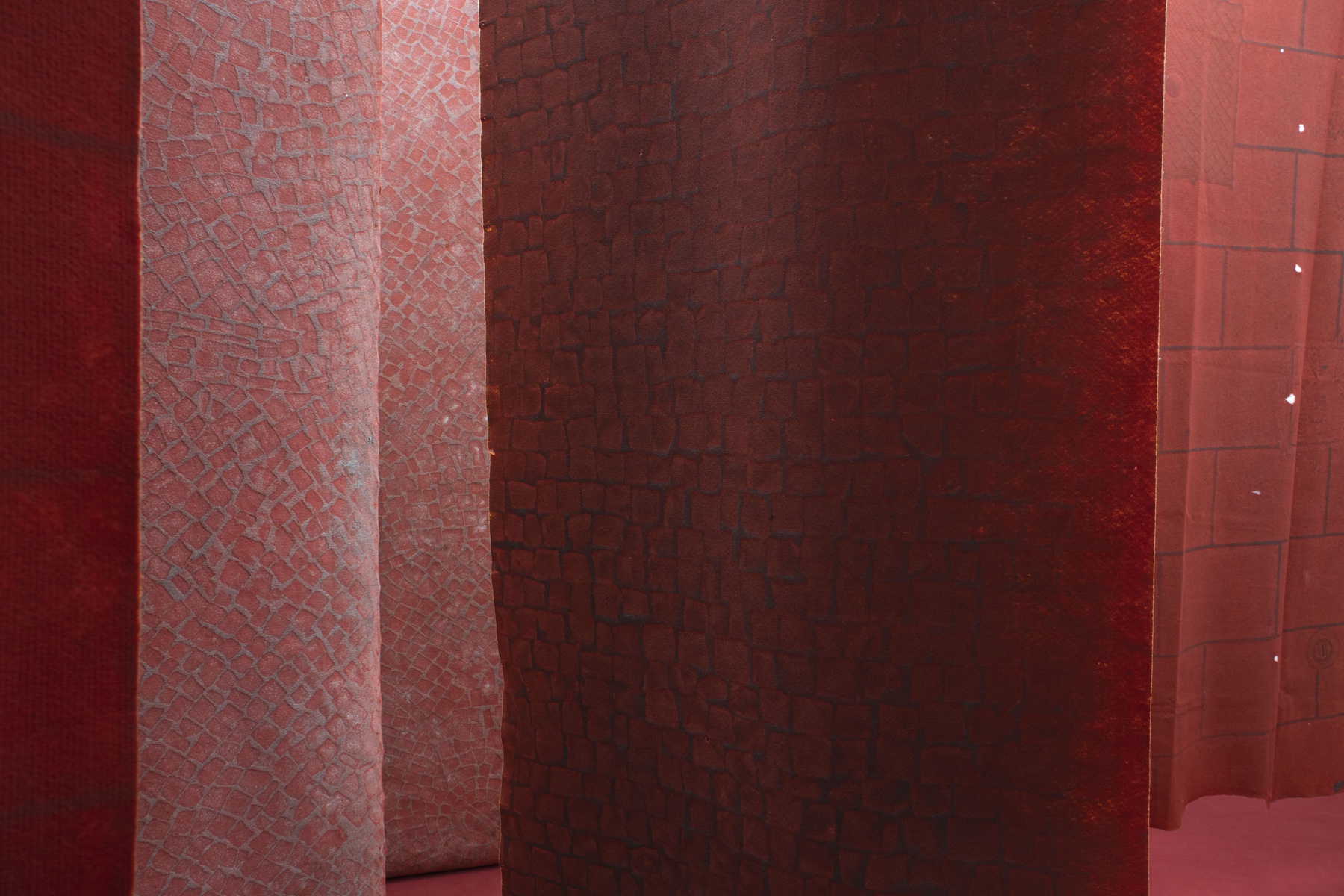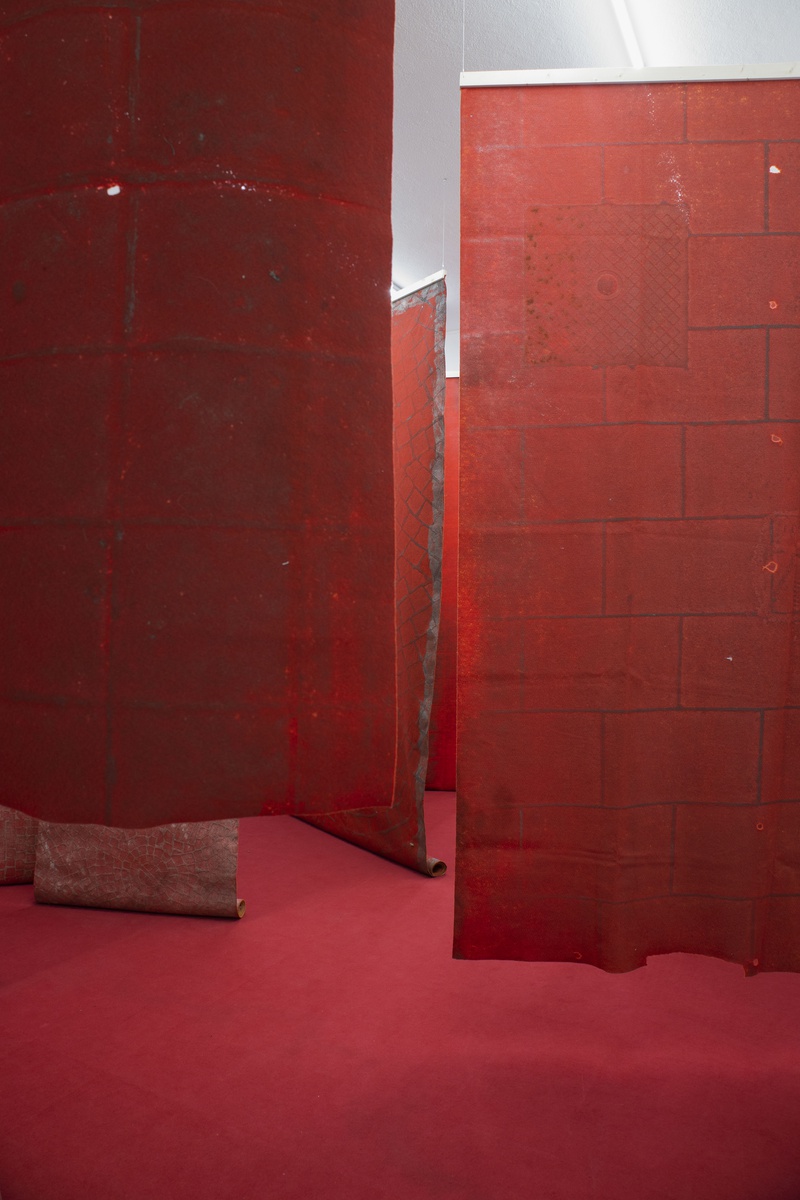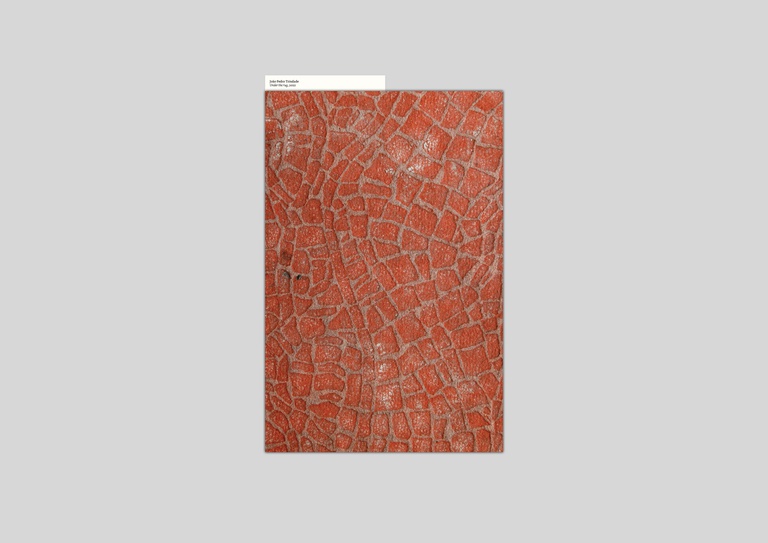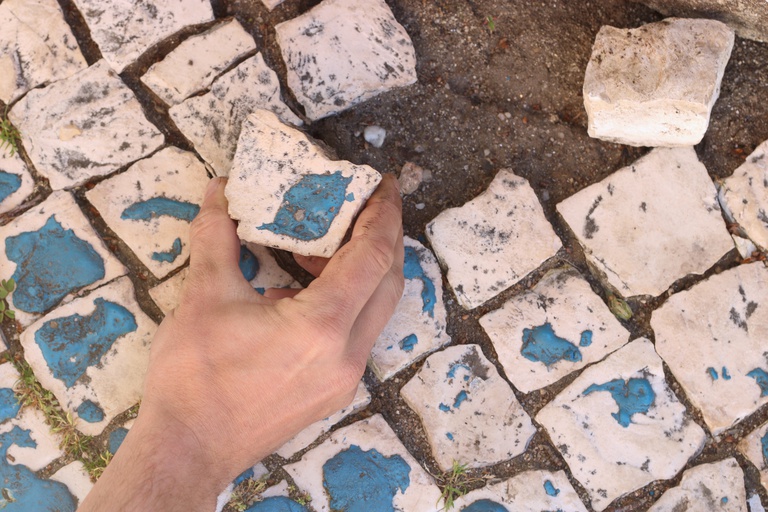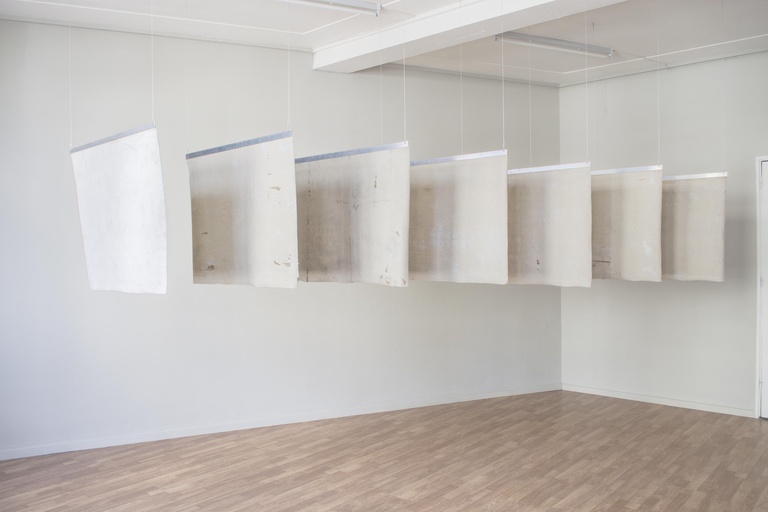Under the rug
Exhibition
5 Mar – 9 Apr 2022
Opening
Saturday, 5 March 17:00
Free admittance
Fragments of the street, monochromatic paintings and overlays expand in Sismógrafo. The rugs collected by João Pedro Trindade have shifted from a horizontal to a vertical plane. Color floats freely. The reading becomes prismatic. Multiple combinations, “reciprocal reflections” (Mallarmé), and different temporal cuts arise. There is no longer a “back” and a “forward”. In the linearity, a vertical time erupts, a “now”. At first glance, all the rugs look alike. One extends the other. They are united by a subtle kinship, but they came from different cities, different streets. They have different shapes, porous borders, no defined limits. They are pieces of history, presence of the qualitative, unrepeatable. How can they look so identical when they are so different? On one side, they are opaque. On the other, transparent. Red, yellow, orange, green, light passes through them. They are the memory of those who walk around the city, of the hustle and bustle, of consumption. They have become fossils of modern life, of what was left on the margins, writing of what has lost its color. João Pedro Trindade dives into the material world where a utopian promise is secretly inscribed. Wandering through the streets, he indulges in the ever-changing urban world. Nothing escapes his gaze. He collects evidence. He gathers debris from the industrial world. He rescues broken, forsaken fragments. He seeks a “true image,” traces of the transitory. Under the rug comes to us in the sequence of João Pedro Trindade’s works produced from transfers to aluminum, modeling in plastics, wood, packaging, and paper. Works that reconfigure spaces, volumes, that displace the perception of objects, works that recover the memory sedimented in old posters or reveal the transparency of images. We enter Sismógrafo and see the reverse of the rugs, what has been hidden on the street. Everything seems familiar to us. We immediately recognize the red, solemn rug. The fashionable rug. But, in the end, everything is an illusion. What was supposed to give color to the street faded away. The instant of fiction has vanished. The surface is worn out, torn. What remains are the traces, the absences, the marks of the crowd’s steps, of the vases that intended to transform the street into a garden, of the rubber from the bicycle tires, the traces of the pavement, boats, fish, black figures. The radical new and the new in fashion are not identical. Fashion is repetition of the same, ephemeral glare, “parody of a motley cadaver” (Walter Benjamin). Fashion is the ally of oblivion. Under the rug shows us the new as the perishable part of things, shows us that the best of the new corresponds to old desires, to that which has remained unfulfilled, shows us that the new is a rupture in temporal succession, rediscovery, memory. João Pedro Trindade’s rugs are involuntary testimonies, immanent history, and remembrance of that which is possible. They show us the loss, the destruction. Wear and tear, and overlaps build images. Images that tell us what we are and seduce us with what we could be. Images that open a world within
the world. The bright red turns into yellow, into an almost orange. There are marks as in sculpture or engraving; transparencies, and superimpositions as in painting; lines, involuntary strokes, tears, scars; traces of a world that is gone, of a life in common. There are muted forms, traces of a happiness that doesn’t arrive. We must read the signs, follow the clues, like the fortune-teller who follows the
most discreet lines of the hand or reads the future in the coffee grounds, like the detective who attends to detail to restore the truth of facts, like the doctor who ventures into a diagnosis, like Balzac’s characters who interpret what is hidden in the public domain or discover the character of a stranger through the small details of clothing, buttons, the fold of a sleeve or the cut of a jacket. Balzac addresses the physiognomy of the streets, the marks on surfaces that give us clues to the lives of strangers. He invites us to discover the history of a family through the presence of a cat’s dander on the pillow or the stains on the rug. Like the fortune-teller, the detective, the doctor, or Balzac, João Pedro Trindade emphasizes the less obvious traits, the elements that usually go unnoticed. In Under the rug, the small unintentional gestures are revealing. They are not obvious marks. They mobilize our senses, our experiences, our memory. This exhibition challenges us, not to find what we already know, but to attend to the refused, the unintentional, to dive into the secret, hidden things. Close and distant, clear and enigmatic, these rugs resemble a puzzle whose image has been lost, they become hieroglyphics, whose key João Pedro Trindade challenges us to find.
Emídio Agra
João Pedro Trindade (Aveiro, Portugal, 1990) is a visual artist and member of Teatro de Marionetas do Porto, where he works in the construction of puppets, props, and sets. His work involves the use of various media such as painting, sculpture, installation, and photography. He has been collaborating in projects of cultural development and dissemination in the city of Porto since 2012, such as Painel and Nartece; he is currently a member of Sismógrafo’s team. He has been exhibiting regularly since 2012 in group and solo exhibitions, among which are: e... e... e... o que cresce entre, e no meio das outras coisas, L+S Projects; à fina força, Sismógrafo; Tirado do sério, Anozero: Bienal de Arte Contemporânea de Coimbra; Anuário 19, Galeria Municipal do Porto; Pictures and Cream. The Confidential Report of the Life and Opinions of Tristram Shandy & Friends, Volume 1, Cristina Guerra Contemporary Art; Uma linha dividida em duas partes, Kubikgallery; Delimitação da escala, Galeria Painel.
Exhibition
5 Mar – 9 Apr 2022
Opening
Saturday, 5 March 17:00
Free admittance

